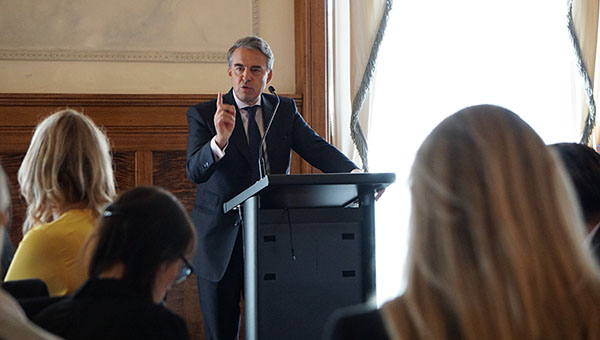Fares to rise as fuel increases hit profits, IATA chief warns
31 May, 2018
5 min read


Passengers should expect fares to rise as higher fuel costs bite into airline profits, the head of the International Air Transport Association has warned.
IATA director general Alexandre de Juniac also said he believed the airline profit cycle was peaking and revealed the association’s next global forecast for 2017, due to be released Monday, would be lower than its previous forecast of $US38 billion.
De Juniac was addressing the Australian Aviation Press Club in Sydney ahead of IATA’s annual meeting starting June 3 and expected to be attended by more than 1000 aviation leaders.
Despite the upcoming profit forecast downgrade, IATA released figures this week showing passenger growth of 6.2 percent in April and cargo growth of 4.1 percent.
“The solid demand growth is one of the reasons why you will see many of the CEOs gathering here in a good mood,’ de Juniac said. “ But they will certainly also be worried about the rising cost of fuel.’’
The IATA boss told the Sydney lunch that the aviation industry had seen fuel prices rising for almost 15 months and the price Brent Crude was now approaching $US80 per barrel compared to IATA’s expectations of $US60 a barrel.
“In the past, such a rapid rise in a key input cost might have plunged the industry back into losses,’’ he said.
“As a result of the efforts of the industry to restructure and re-engineer their businesses, we are still expecting solid profits this year, but probably not at the levels we were anticipating in December.”
While rising fuel prices usually had an impact on fares within 10 to 12 months after the rises, de Juniac said IATA had yet to see the increase passed on to fares in major markets such as Europe and the US.
But he said fuel costs would probably bite significantly into airline profitability next year.
“if it continues above $US80 then it will bite hard the results of our members,’’ he said.
WATCH Virgin Galatic fires up
The airline chief said he was unable to forecast fuel prices and the signs were moving in two directions.
This included more oil coming from the US as well as Saudi Arabia and Russia but also political uncertainty in some parts of the world, including the Gulf region.
Asked about fuel surcharges, de Juniac said that was something IATA did not control and the size of fuel surcharges was directly linked to competition.
It was difficult for airlines to impose a fuel surcharge when there was strong competition.
But he noted that if airlines were to survive a significant fuel increase, they needed to pass part of it on to passengers and fares.
“Otherwise they will go into bankruptcy,’’ he said. “It’s impossible to cope with an increase, a doubling of the fuel price, without passing a part of it on (to) the price.’’
The IATA director general said airlines globally made a profit of about $US8 a seat and the airlines were in a fragile, low-margin market with a very thin buffer to cope with shocks and risks.
Cycles in the industry usually lasted eight to 10 years and it had now been in a good cycle for nine years.
Many factors – not just fuel—were pushing up costs, including the costs of infrastructure, labor and taxes.
“So we say the politicians, to the community, to our members, be careful we are already at the peak of the cycle,’’ he said.
However, he believed the industry’s greater resilience meant the downward cycle may not be as severe as in the past. This was on the proviso here were no major shocks such as the global financial crisis and SARS.
In other parts of a wide-ranging speech, de Juniac welcomed almost $A300m allocated by the Australian government to improve airport security but cautioned that costs should not "leak back to the airlines"
He also described Australia as a good news story when it came to air traffic management with the OneSKy system set to help manage congestion and said airlines were pleased with consultation over a second Sydney Airport.
"What we need to work on next is a vision for the roles of Badgerys Creek and Kingsford-Smith and the connectivity between the two airports,'' he said. "This will help airlines to plan effectively their future services.
"As phase one of Badgerys Creek will not be ready before 2026 there is an urgent need to find ways to use Kingsford-Smith to its full capabilities."
IATA would also work with Airlines for Australia and New Zealand and the Board of Airline Representatives Australia on input to the expected Productivity Commission review on airport regulation.
Next Article
2 min read
Asiana Airlines crash - what is next?
Get the latest news and updates straight to your inbox
No spam, no hassle, no fuss, just airline news direct to you.
By joining our newsletter, you agree to our Privacy Policy
Find us on social media
Comments
No comments yet, be the first to write one.
